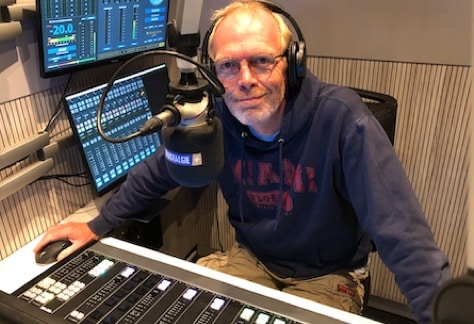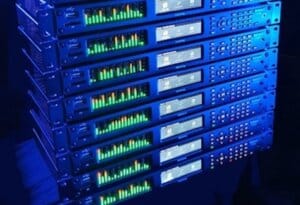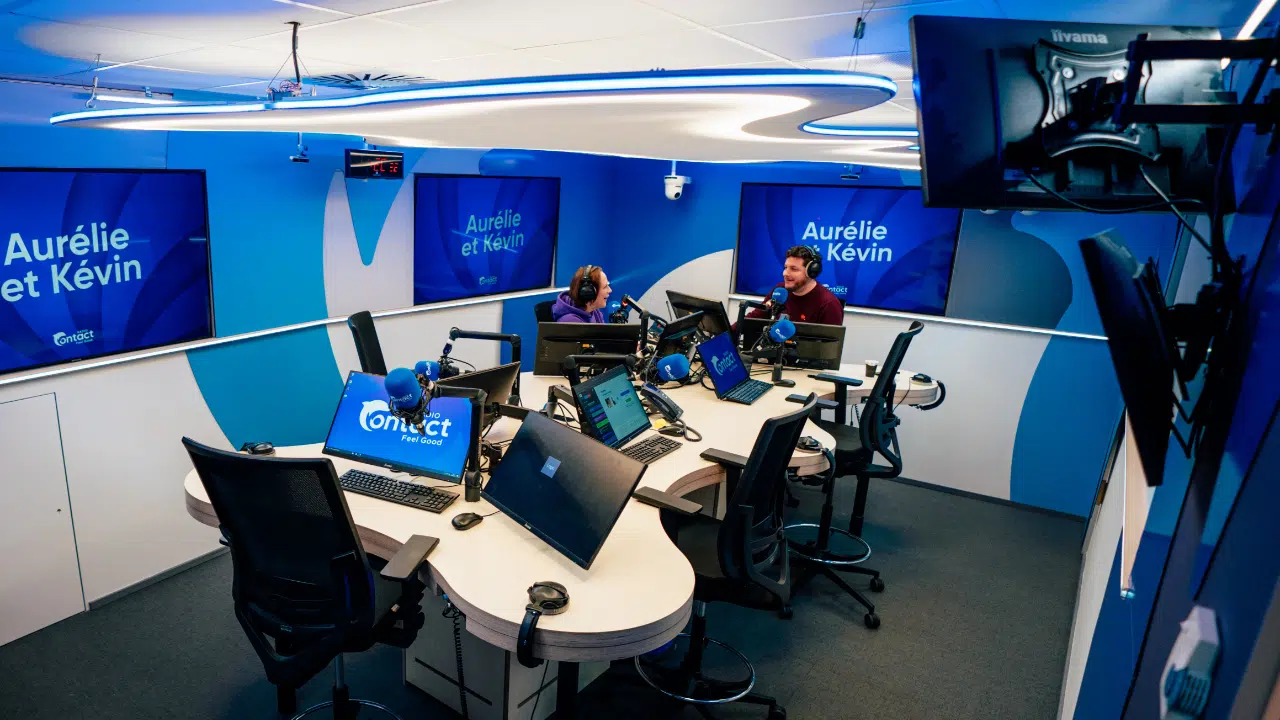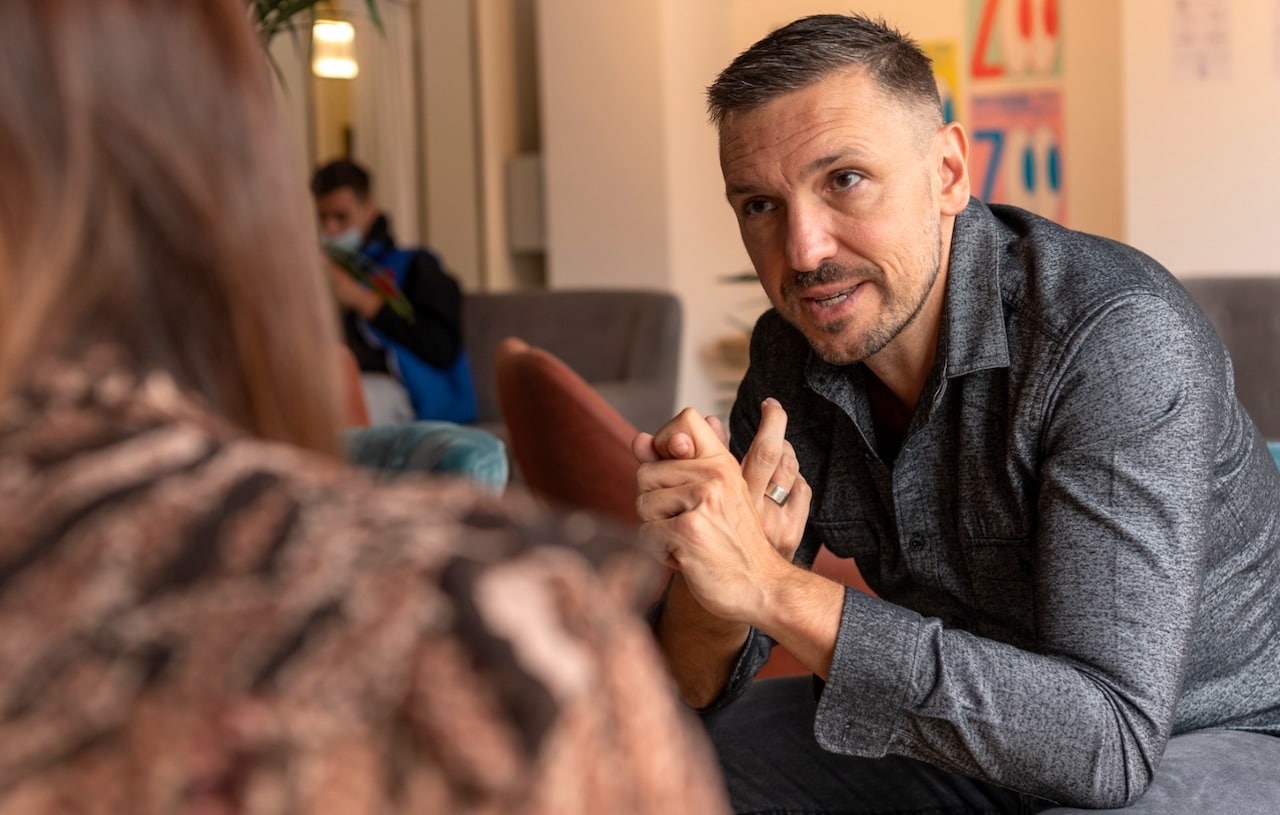

Last week we focused in on Nostalgie Vlaanderen’s modernization process. This week we take a peak into Nostalgie Wallonie’s radio landscape, with Brussels-based DAB+ station Nostalgie+ in the spotlight.
BRUSSELS — Brussels-based broadcaster Nostalgie Wallonie shares its building with sister stations NRJ, NRJ Hits TV and Chérie, under the wings of NGroup. The group has been busy modernizing its strategy and technology and aims to upgrade it’s entire radio landscape by 2022.
In November 2019 NGroup added DAB+ station Nostalgie+ to its line up of offerings. The French-language station has its eye on a specific target — seniors. “A lot of stations are fishing in the same audience pond, with only little attention for the older age bracket,” explained Jean-François Pottier, head of music of Nostalgie’s radio stations.
“Today’s ‘seniors’ are different than 25 years ago,” he said. “The 60- to 65-age-group is active with a broad scale of interests. And whereas our flagship Nostalgie station offers a broad musical mix from the 1960s to 2010, Nostalgie+ allows us to focus on a specific generation — the determined 55+ age group.”
New Addition
Nostalgie+’s playlist mainly highlights music from 1955 to 1979. “But we’re flexible,” Pottier continued. “For example, Belgian singer Frédéric François was a successful artist in the 1960s and we were able to attract his loyal following. Mainstream radio doesn’t play his songs a lot. For us, François is one of the prime examples of Nostalgie+’s core artists.”

With about 40% of the playlist made up of a French-language repertoire, Nostalgie+ is some 5% above Nostalgie’s language quota. “We want Nostalgie+ to sound easy listening, an entertaining mix with a slightly old patina, but without sounding old-fashioned,” he added.
“To create our playlist, we selected songs from the database of our main Nostalgie station, concentrating on the 1960s and 1970s. We already had a part of the information from the launch of the Nostalgie 60 and Nostalgie 70 web radios. “It was quite a fascinating exercise — we discovered songs that had disappeared from the rotation lists for years.”
Artists like André Brasseur or Rocco Granata: “We knew the songs but who remembers the titles?” said Pottier. “In addition to our digital music database we digitized CDs. Nostalgie+ completed its music inventory with legal downloads.
The broadcaster digitized the exhaustive music vault with MusicMaster. It also uses Zenon Media software in the main control room to generate Nostalgie+’s playlist. Individual music programmers can also add personal tracks.
Dedicated Music Base
In addition to music programs, Nostalgie+’s runs presenter Brice Depasse’s “La Story,” a series about lengendary musicians and groups.
“When we finalize the new studio this fall we’ll include more specific programs in our roster,” Pottier said.

The media house backed Nostalgie+’s launch with an original promotion campaign, where the station replaced artists on iconic record covers like “Abbey Road” with Nostalgie+ listeners in Brussels.
“Winning the ‘analog’ 55+ age group for a DAB+ station was a huge challenge,” admits Pottier. “Initially we wanted an FM network for the station. But, I’m convinced that once DAB+ is ‘settled’ more people will tune in. Pending the audience’s automatic reflex to switch on their DAB+ set, we also offer Nostalgie+ on streaming via the app and website.
It’s also available via social networks, as part of our strategy.” In CIM’s recent radio survey, Nostalgie+, with a 1.65% audience share, just misses the French-speaking community’s top 10 stations.
In 2009, NRJ Belgique and Nostalgie began sharing one building, using Telos Alliance’s Axia as the main system to serve all four radio studios. LiveWire connected the complete radio landscape over IP.
New Technology
“Three years ago, we decided to split up our technical broadcast infrastructure,” said Geoffrey Naniot, NGroup network manager.
“For our new ‘public’ studio, we chose Wheatstone and their WheatNet-protocol. The main difference is that, contrary to Axia, where all intelligence is centralized on one or two (Pathfinder) engines, WheatNet opts to ‘explode’ and split the intelligence over the complete network, facilitating audio routing. This lets us interchange any new NGroup studios.”
The new Wheatstone technology fit NGroup’s requirements for its new 60 m² live studio. The technical configuration consists of a Wheatstone LXE console (37 positions Frame), five Wheatstone Blade 3 (two analog, two digital and one analog/digital). The setup also features two Neumann BCM 104 and five Shure Beta 87 microphones, an Omnia Voco 8 and a pair of Focal CMS 50 speakers for control room monitoring.
“We actually designed that studio designed for NRJ but we also use it for live Nostalgie broadcasts — it fits up to 30 visitors,” continued Naniot.
With the live studio on air for two years, Naniot decided to pursue with the same technology for Nostalgie+’s studio. “The Wheatstone equipment is ergonomic, easy to maintain and service. At present, we are preparing a full-scale replacement of the Axia network by Wheatstone in all future studios.”
Centralized Workflow
One of the challenges for the new Nostalgie+ studio was the limited space we had. They originally planned for the room to be a production booth. But it had to offer room for one presenter, two guests and the self-op technical desk. “It was a real ‘tour de force,’ but the result is a workable studio area,” Naniot said.

Nostalgie+’s studio uses a Wheatstone LXE Mix Engine Blade with two consoles — one LXE 21T 21 position physical frame, and one touch screen Glass E virtual console. This results in a compact presenter self-op position. Three Neumann BCM 104 mics connect to an Omnia Voco 8 microprocessor.
The WheatNet Analog Blade 3 adds analog I/O to the AoIP network and allows the input of extra analog outboard or instruments. “We needed to bear in mind our target audience and the age of our presenters. So we included some features that facilitate studio work and presentation,” Naniot added.
“For instance, all the mic stands are Yellowtec Mika and have extra document holders. Older presenters prefer to have everything on print — habits are hard to change for long-time radio hosts. But we don’t have vinyl or CD players in the studio. They left our on-air landscape a decade ago.”
Future Plans
Zenon software on an HP DL360 server in the main engine room automatically plays Nostalgie+’s radio content. “For the time being, and in view of the new studio’s completion, we record all presenter voices on voice tracking and insert them into the Zenon music flow.”
Nostalgie+ uses the studio’s on air signal for both DAB+ and its web stream. A Sound4 Stream x2 card processes the signal and streams it directly to Shoutcast servers. It also simultaneously pushes the processed AES67 signal into the WheatNet Network.
“Once this processed signal enters the network again, it’s really easy to connect it where and when we want. Like to the two Paneda P-601 DAB+ encoders that then route it to RTBF’s DAB+ MUX,” explained Naniot.
As for NGroup’s future plans, Kim Beyns, COO NGroup, says that by fall 2021 they want to install a Wheatstone radio studio in NRJ’s former on-air room.” One year after that, the old Nostalgie Wallonie studio will become Chérie’s on-air facility. “In two years’ time, our complete radio infrastructure will use WheatNet,” he concluded.





















